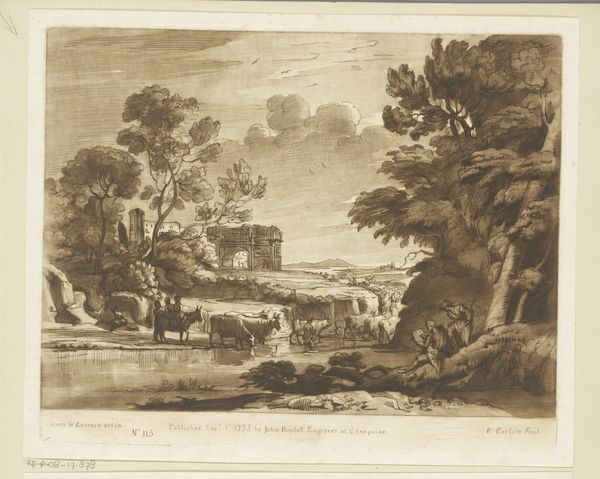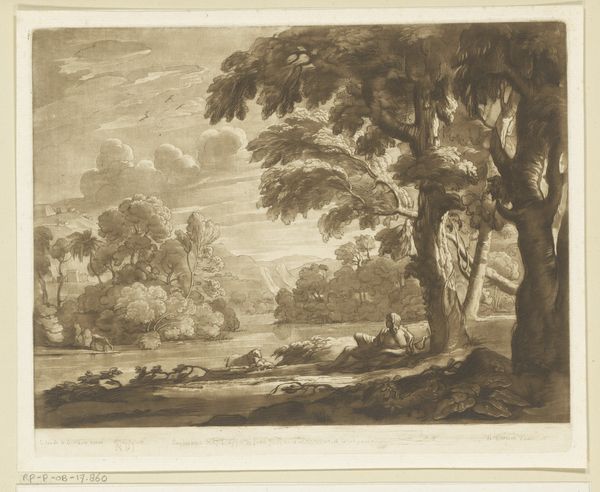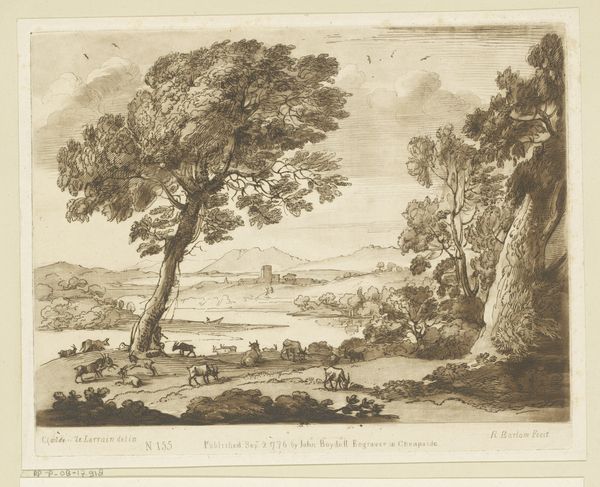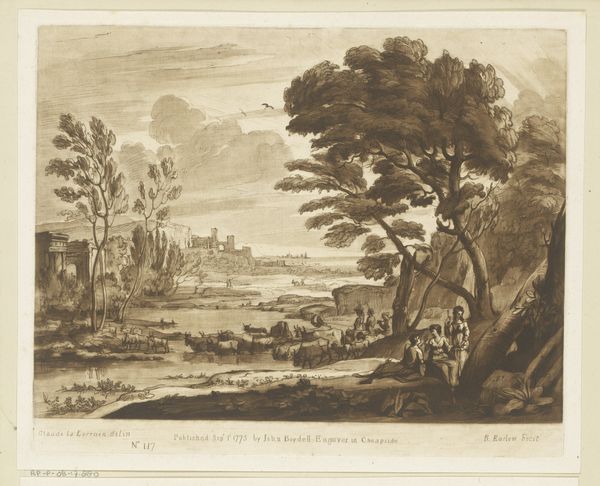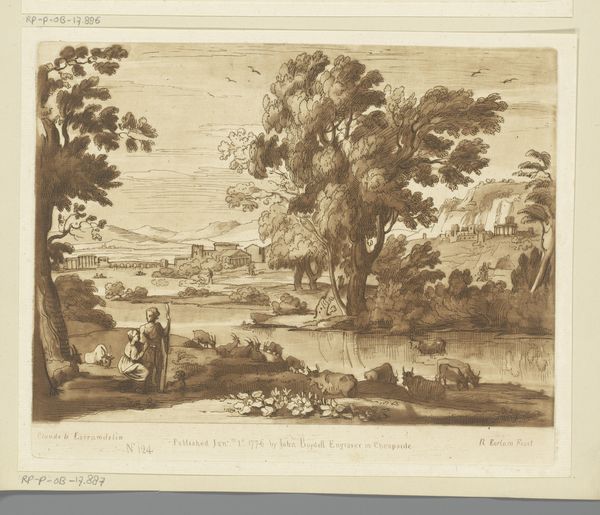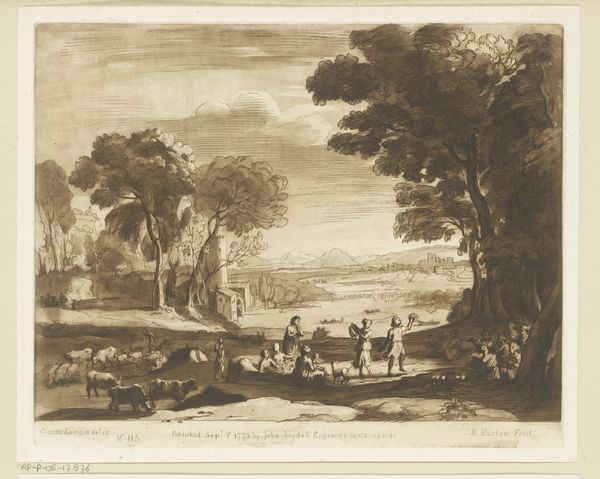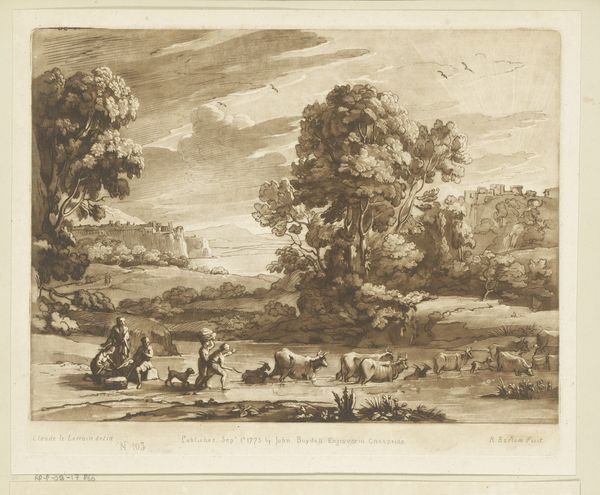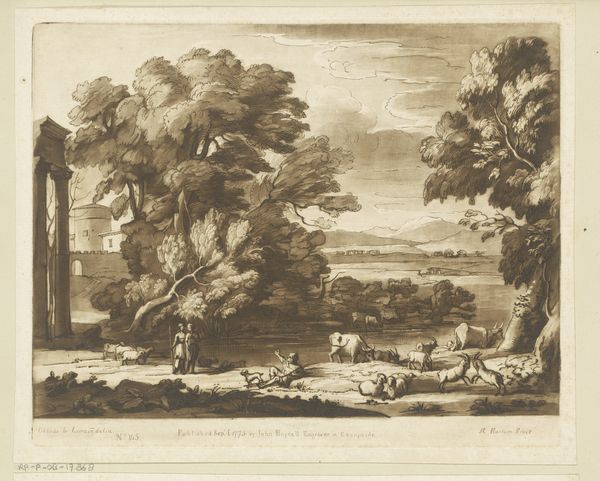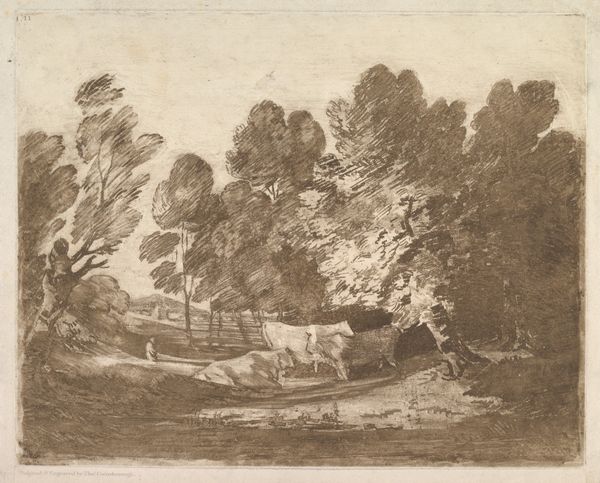
Landschap met dorp op een heuvel en drie veedrijvers die rivier oversteken Possibly 1775 - 1779
0:00
0:00
richardearlom
Rijksmuseum
print, engraving
#
neoclacissism
# print
#
landscape
#
15_18th-century
#
line
#
cityscape
#
engraving
Dimensions: height 207 mm, width 259 mm
Copyright: Rijks Museum: Open Domain
Editor: Here we have Richard Earlom's "Landschap met dorp op een heuvel en drie veedrijvers die rivier oversteken," likely from between 1775 and 1779. It's a delicate line engraving, and I'm struck by how the artist uses varied densities of lines to create a sense of depth and light. What visual elements stand out to you in this landscape? Curator: The composition is certainly masterful. Observe how Earlom structures the space using a foreground, middle ground, and background, creating a recession that leads the eye deeper into the pictorial space. Notice how the darker areas in the lower right contrast against the relatively lighter areas. Can you see how it subtly frames the scene? Editor: Yes, I see what you mean about the framing. The trees on either side seem to act as curtains drawing our attention to the city in the background. It's almost theatrical. Curator: Precisely. The strategic placement of elements within the picture plane generates visual harmony. Reflect on the calculated contrast of vertical trees to horizontal land formations, and question what sort of compositional tempo Earlom aims to conjure in our minds. Is this merely a transcription of landscape or an invocation of a kind? Editor: It does seem like more than just a straightforward depiction. I hadn't thought about the verticals and horizontals. That creates a sort of stillness amidst the movement of the figures in the river. So, the relationship between these pictorial elements creates a complex dialogue? Curator: Indeed. These elements orchestrate what Roman Jakobson called its poetic function. What would otherwise merely signify – become something which expresses and performs. Considering the print medium itself and the potential for reproducibility, do you detect elements within it capable of undermining such expression? Editor: That’s fascinating to consider—the layering of intention and potential undoing via reproducibility. Thanks for illuminating the rich formal relationships at play here! Curator: My pleasure. A meticulous analysis reveals the complex strategies employed by the artist. And you raise critical implications concerning print media of the period.
Comments
No comments
Be the first to comment and join the conversation on the ultimate creative platform.

